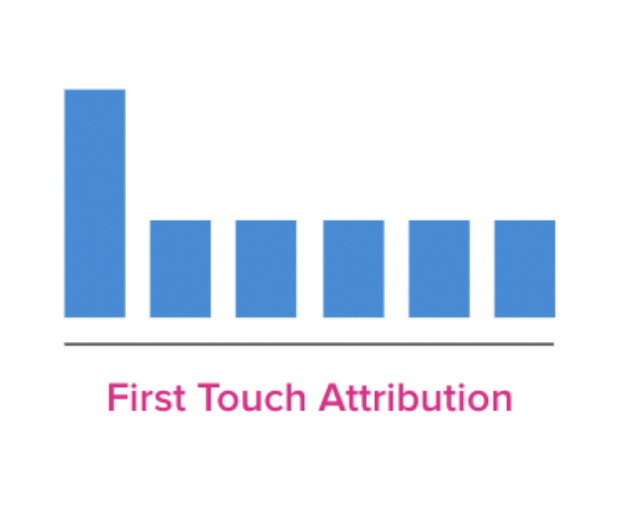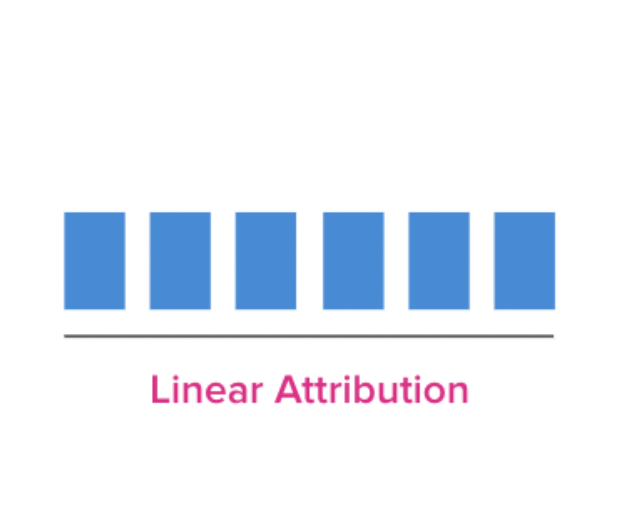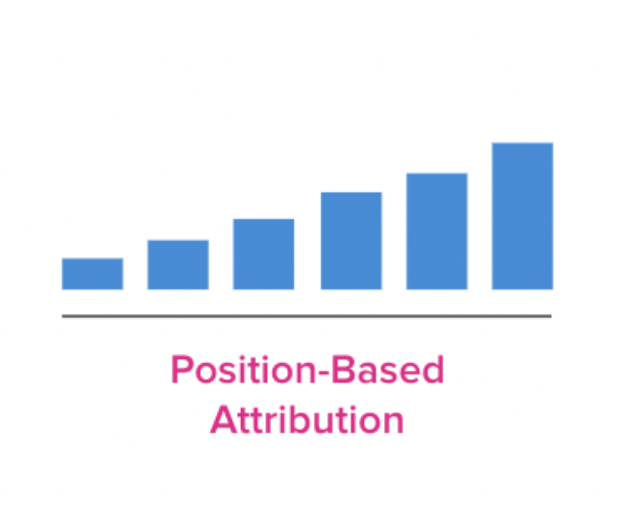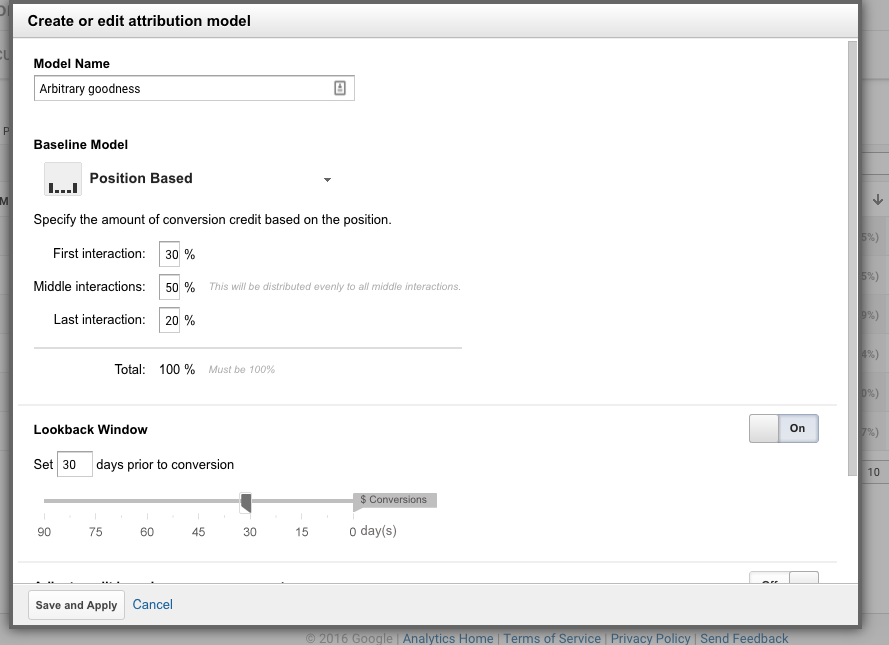You’ve worked all quarter on a new content marketing series and conversions are ticking upwards.
Do you attribute these conversions exclusively to your content? What about the customers who clicked through to your article from your social media page—do you attribute those conversions to socials or to the article (or both)?
Optimizing spend is a top priority for marketers. But it’s tough to nail marketing attribution and know where to focus your efforts when linear funnels are disappearing further into legend.
Multi-touch attribution models have tried to solve this problem, but many marketers are using the wrong models to measure their campaigns.
In this article, we’ll dive into popular attribution models that work and explain how to get the most precise attribution data so you can get an accurate picture of your ROI.
Table of contents
- What is an attribution model?
- Out-of-the-box: The standard attribution models
- Where did they come from? The last-interaction attribution model
- Where did they start? The first-interaction attribution model
- What did they do before they did that? The last non-direct click attribution model
- Dividing the credit equally: The linear attribution model
- Prioritizing first and last touchpoints: The position-based attribution model
- Increasing in importance: The time-decay attribution model
- Going beyond standard models for more accurate marketing attribution data
- Conclusion
What is an attribution model?
An attribution model is a set of rules that govern how you allocate credit given to marketing and sales efforts that result in a conversion. In other words, it aims to answer the question “which channel or campaign generated this user, lead, or sale?”
In the traditional model, marketing attribution was easy. A customer visited your store with a newspaper clipping, and you’d attribute that sale to your recent newspaper ad.
Because touchpoints now happen across dozens of channels (often in the span of days or even hours), conversion paths are more complicated and far less linear:

Customers now interact with brands across social media, email, Google Ads, blog posts, etc. This makes it more difficult to develop an accurate model for measuring touchpoint value (and, therefore, to know where to allocate budget).
An example of attribution modeling
Take this fairly straightforward customer journey:
- A customer searches Google to solve a pain point, and discovers one of your blog posts;
- The article introduces solutions to their challenge, and they download your ebook to learn more;
- The lead magnet triggers your email nurture sequence to send weekly tips to keep on top of this pain point;
- At some point in the email campaign, you offer a personalized product demo;
- After the demo, the customer subscribes to your platform.
In this pathway, which touchpoint is responsible for the conversion?
You could argue:
- The blog post attracted the customer to your site in the first place—though they may not have been ready to buy.
- The email campaign educated the customer on a challenge they didn’t yet understand—but they still weren’t ready to buy.
- The sales demo led to the sale—but they only saw the demo because they downloaded the ebook.
In reality, each of the touchpoints likely contributed in some way. Effective multichannel attribution modeling helps you determine which channels are most influential so you can make better marketing decisions.
For example, you might find that your email campaign has little influence on conversion, and the social content they engaged with weeks after downloading the ebook is what drives the sale. Aligning that email sequence with your social content may speed up the sales cycle, reducing your customer acquisition cost (CAC).
You can only access these insights once you’ve determined the most appropriate attribution model for your brand.
Out-of-the-box: The standard attribution models
No marketing attribution model is perfect, but the right model in the right context will help you squeeze more out of your marketing budget.
Google Analytics, the most widely-used platform for tracking marketing attribution, offers a Multi-Channel Funnels (MCF) Model Comparison Tool to help you determine which model makes the most sense for your campaigns.
Use the different attribution models below to guide your decision-making process, and be prepared to engage in some experimentation to find the right model for your marketing strategy.
Where did they come from? The last-interaction attribution model
Last-interaction attribution, also known as last-touch attribution or last-click attribution, is the default in most analytics tools and the most widely used.
Consider this pathway:
- A customer sees your Google Ad when searching for a product you sell;
- They add the product to their cart but don’t purchase;
- You send a cart abandonment email;
- Their cart abandonment also triggers retargeting ads;
- The customer clicks on a retargeting Facebook ad and purchases.
In the last interaction model, that retargeting ad receives 100% of the attribution credit.
This attribution model gives all of the weight to the last interaction with your brand, regardless of what other touchpoints came before it.
Even though it’s the default attribution model, last-click is fundamentally flawed. It’s almost never the case that the last touchpoint is solely responsible for a conversion.
In the example pathway above, the customer may not have come to your site without seeing the initial ad. They may also have planned to purchase that evening after receiving a discount in the cart abandonment email.
As Avinash Kaushik put it, “The only use for last click attribution now is to get you fired. Avoid it.”
When to use the last-click attribution model
Avoid the last-interaction model when your buying cycle is long, many decision-makers are involved, or you sell high-ticket items. There is a lot of consideration involved in these transactions and the last click won’t tell you which touchpoints were most effective.
Use the last-click model when the buying cycle is short and little deliberating is involved, such as in fast-moving consumer goods (FMCG) sectors.
Where did they start? The first-interaction attribution model

First-interaction attribution, also known as first-touch or first-click attribution, is the opposite of the last-click attribution model. It gives credit entirely to the first touchpoint.
Recall the pathway discussed in the previous model. Under the first interaction model, the initial Google Ad would receive 100% of the responsibility for influencing the sale, regardless of the other touchpoints that came after it.
There is some validity to using this model (the following touchpoints would never have taken place without the first), but it is still flawed. Buyers rarely convert based on a single initial interaction, such as reading a blog post or seeing a social media ad.
As Avinash wrote, “First click attribution is akin to giving my first girlfriend 100% of the credit for me marrying my wife.”
When to use the first-click attribution model
The first-touch attribution model may be appropriate where building brand is your primary concern, for instance, if you’re a market newcomer.
In this example, your objective is for your marketing efforts to touch as many potential customers as possible, so those first-touch interactions become vital to reaching that goal.
What did they do before they did that? The last non-direct click attribution model

Last non-direct click attribution is similar to the last-click model, except it discounts direct traffic.
Consider an ecommerce pathway that looks something like this:
- A customer runs an organic search for a given product on Google;
- This keyword triggers one of your Google Ads;
- The customer clicks through on the ad, browses products, and adds some to their cart;
- They don’t go through with the purchase, which triggers a cart abandonment email;
- Later, the customer goes directly back to your website and proceeds with the purchase.
Under the last-interaction model, this conversion would be attributed to direct traffic. In the last non-direct click model, it’s attributed to the cart abandonment email.
When to use the last non-direct click attribution model
For most businesses, the last non-direct click model is still too basic to account for most buying journeys. It often directs credit where it isn’t due.
If your direct traffic converts quickly, you could potentially benefit from this model. However, if customers tend to browse your site during a purchase session, avoid this model. It could be something else that convinces them to buy.
As Avinash put it, “Why undervalue Direct? Why undervalue a marketer’s efforts to create brand recognition and brand value?”
Dividing the credit equally: The linear attribution model

Linear attribution is a step better than single-touchpoint models. It takes into account all trackable interactions and spreads the attribution credit evenly.
While each touchpoint gets a participation award for contributing to the sale, the model doesn’t take into account how deserved that share is.
Let’s look at this customer pathway:
- The customer sees a positive tweet about your brand from an influencer they admire, so they spend an hour or so exploring the content on your website;
- From your website, they click on your social media icons and follow you on several channels, and they also sign up for your newsletter;
- Over the coming months, the customer scrolls past posts from your brand on social media, rarely stopping to read any;
- They also never open your newsletters;
- A situation at work leads the customer to need your solution quickly and the influencer posts again about your brand the same day;
- The customer opens your latest newsletter in their inbox and subscribes to your platform through the CTA at the bottom.
The linear attribution model gives equal credit to social media, your website, and your newsletter, even though they scroll past your posts and don’t read your emails.
By this logic, you’d be tempted to divide your marketing spend equally for each channel. However, you could argue that influencer marketing and the content on your website were the most effective here.
When to use the linear attribution model
Big companies or more established companies with a decent marketing budget should focus on determining attribution percentages more accurately.
If you don’t have the budget or the data to allocate more accurate percentages, the linear model at least accounts for several touchpoints instead of putting everything in one boat.
Prioritizing first and last touchpoints: The position-based attribution model

The position-based attribution model (sometimes called u-shaped attribution) is a blend between the linear, last-interaction, and first-interaction models.
This model gives the majority of the credit to the first and last interactions, with the remaining credit distributed evenly across every other touchpoint.
This model appears to make the most sense; the first and last touchpoints are clearly very influential. It recognizes two critical steps in the buyer journey, while still accounting for others along the way.
When to use the position-based attribution model
Use the position-based attribution model if your business has several touchpoints before customers make a purchase (i.e. businesses with long sales cycles).
Increasing in importance: The time-decay attribution model

The time-decay attribution model is based on the principle that all touchpoints are worth something, but those closest to conversion are worth more.
The last interaction receives the most credit, and all interactions before that receive attribution in decreasing amounts.
The biggest criticism of this model is that it underestimates the value of top-of-the-funnel marketing efforts, which introduced the customer to the brand in the first place.
When to use the time-decay attribution model
Use time-decay models in scenarios with long buying cycles and when relationship-building is a key factor in sales success (particularly in B2B).
Going beyond standard models for more accurate marketing attribution data
The six traditional types of attribution models discussed above are a good start, but they’re fairly limited in their application.
Choosing one of the standard attribution models is subjective, based on marketers’ gut feelings about where and when customers make buying decisions. Subjective decisions can be incorrect, leading to wasted effort and spend.
Customizing standard attribution models can get you closer to accuracy
It’s possible to build custom attribution models on top of the out-of-the-box Google Analytics models.
For instance, you can adjust the weighting of interactions in a position-based model to give less credit to first or last interactions.

You can further customize your attribution model by combining Google Analytics and R, a programming language for statistical computing.
Use Markov models (random process models that reflect changing systems) to improve attribution tracking. At a high level, Markov models look at the likelihood of subsequent steps in a conversion path, and attempt to calculate the importance of a touchpoint based on its removal.

Kaelin Tessier of Bounteous, a digital experience agency, describes the benefits of using Markov models for attribution modeling:
Objectivity – No gut feelings here! Only facts.
Predictive Accuracy – Predicts conversion events.
Robustness – Valid and reliable results.
Interpretability – Transparent and relatively easy to interpret.
Versatility – Not dataset dependent. Able to adapt to new data.
Algorithmic Efficiency – Provides timely results.
Markov models solve the heuristic-based GA models’ biggest challenge: objectivity. The model determines the importance of each touchpoint, not the marketer.
But there are still plenty of nuances to consider. For example, what if a lead follows your CEO on LinkedIn and is influeced by the content they publish? Attributing to the “dark funnel” can be tricky.
For the most accurate attribution insights, look to data-driven models.
Increasing precision with data-driven attribution models
As customer journeys increase in complexity, so must attribution models. Forcing customer journeys into neat little boxes rarely accurately represents how buying decisions take place.
For now, algorithmic or data-driven approaches can be considered the gold standard of marketing attribution.

As Bill Macaitis, former CMO of Slack, said in an interview:

Bill Macaitis:
“Today, algorithmic attribution has become the best practice for data-driven marketers and companies.
We can now utilize all the available data collection, tools and models to take in all different touch points and make predictive, algorithmic attributions. When set up properly, we can track each touch point and all downstream funnel metrics. And by weighting proportionally across a very large data set, we can determine with much more accuracy and precision what should get the credit–including both online, offline, performance-based and brand advertising.
It’s not perfect, and it’s not easy. It gets difficult with word of mouth referrals, dark social, and other “hidden touches.” But, it drives a much deeper understanding of the buyer’s journey and which of your marketing efforts are paying off.”
Products like Google Analytics 360 and Impact.com use machine learning and advanced statistical calculations, like logistic regression, to determine how credit should be distributed for marketing touchpoints.
At a high level, data-driven attribution analyzes the differences in touchpoint engagement between customers who convert and those who don’t. The engagement patterns, now accounting for quick conversions and missed opportunities, inform a more accurate, proportional credit attribution.
Algorithmic models are objective and automated, removing the “gut-instinct” decisions marketers make when they decide which step seems most important.
Algorithmic models are highly complex and aimed at enterprises. It’s going to be overkill for many businesses, particularly when considering the cost of these products (Google Analytics 360 starts at $150,000 per year).
If algorithmic attribution is out of reach, your best approach is to use the standard model that fits your strategy best, customize it, and continually optimize as you learn what works and what doesn’t.
Isolating weaknesses through existence testing
“Existence testing” is inferring the effectiveness of a certain channel by dropping it out of the mix for a bit. This is what many of the data-driven models above are based on, by the way, but at scale.
Jim Novo, founder of The Drilling Down Project, put it well on a Digital Analytics Podcast episode:

Jim Novo:
“If you think [display] is so valuable in terms of helping other campaigns, why don’t you just kill it for a week or two weeks and see what happens? And then add it back.
Can’t you do that kind of testing? Is it worth it to you to invest that money elsewhere? How serious are you about figuring out the value of display?”
Connecting the dots between offline and online behavior
Modern purchasing behavior includes an array of customer activities. You may have customers who engage in any or a combination of the following:
- Researching and purchasing purely online;
- Researching and purchasing purely offline;
- Researching online and purchasing offline (also known as ROPO or webrooming);
- Testing out products in-store and purchasing online (also known as showrooming).
Standard attribution models tend to account exclusively for digital marketing and online behavior. Even when tracking offline channels like print media and direct mail, it’s done so with a dedicated URL.
So, how can marketers track what’s going on offline?
There are a few ways businesses have been able to account for activities in-store and connect the dots to online activities.
1. Bluetooth Low Energy (BLE) beacons
Beacons can be useful for your customers while also feeding back information about their shopping habits.
It typically works like “in-store GPS.” When customers who’ve installed your app on their device enter your store, the beacons communicate with the app and connect that user’s online behavior to their in-store purchasing.
Target uses beacons to help customers locate items on their shopping list, find in-store help, and even has a geographically-based newsfeed.

Macy’s has been using beacons to offer suggestions, send real-time promotions, and track and attribute purchases since 2014.
While this kind of tracking has been popular with retail stores, some customers may not feel comfortable with it. Pre-empt interest by surveying shoppers, then test with a small group before rolling out.
2. Loyalty cards
Loyalty cards are a simple way to connect digital profiles with offline purchasers, provided the cards are activated online.
Several platforms offer businesses integrated loyalty programs, like Yotpo and Stampme.

The platforms connect online and offline experiences, usually by prompting users to scan a loyalty card at the physical checkout, so users can collect points anywhere they shop.
3. Lead customers offline
Furniture and decorations producer VOX drives the customer journey to culminate in a face-to-face consultation using an application called VOXBOX.
VOXBOX allows customers to design a virtual furniture layout and then recommends customers schedule an in-person consultation at one of their physical stores.

With this approach, VOX can track all touchpoints for that customer, including offline activities.
Conclusion
There is no one-size-fits-all in attribution modeling. The most robust solutions use algorithmic modeling to assign attribution credit, but they come at a significant cost.
If algorithmic attribution isn’t in your wheelhouse, your best bet is to build customized models on top of the baseline offerings in your preferred analytics suite. Optimize your attribution as you learn more about how your customers interact with marketing touchpoints.
Become an attribution master with our marketing attribution course.





